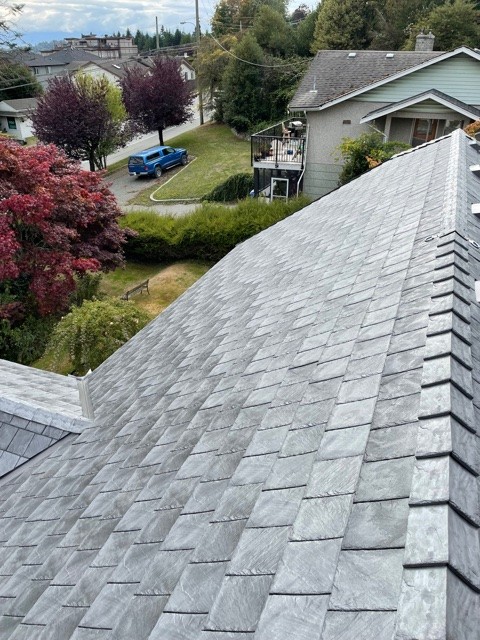Asphalt shingle roofing is a very popular choice of roofing for most homes. This type of roofing offers several benefits that make them a go-to choice for most homes. Unfortunately, they also have their flaws. At some point, you may notice the presence of granules, tiny rocks, or sediment on these roofs and their gutters.
What do these particles’ presence indicate, and what do they tell about your roof? Read along as we discuss what shingle granules in your roof and gutters tell you about the condition of your roofing system.
Understanding What Shingle Granules Mean
When roof manufacturers produce asphalt shingles, they usually follow a procedure where they embed specific materials into the material to form a surface coat.
They usually make this surface coat by pressing press ceramic materials in the form of mineral granules into hot asphalt. When these hot asphalts dry up, they usually transform to create the colors of the shingles we usually use on roof surfaces.
In addition, the granules also dry up to become a protective coating that protects the roof from harmful UV rays the sun emits. They also make the roof more durable and resistant to fire outbreaks. Simply put, this protective coating increases the lifespan of your asphalt shingles.
With proper granule coverage, your roofing system should withstand constant weather elements like rain and wind. However, when your roofing system receives a heavy beating from these weather elements every day, its granules will begin to loosen.
As a result, the granules will begin to wash off the roof’s surface and sweep into your gutters and downspouts.
What Do Shingle Granules in Gutters Indicate?
It is normal for your roof to shed some roof some of its granules when you’ve just installed it. So if you’ve recently installed your roof and you notice tiny rocks or sediments around your gutters, you don’t need to worry.
However, this situation may drastically change. If you recently experienced a storm, you may notice a large presence of these ceramic-coated materials on your roof. It may be heavy rain or a heavy hailstorm. These weather events also tend to cause an influx of many of these ceramic-coated materials, but it does not necessarily mean that you need to replace your roof.
However, if the granules keep washing off excessively and those tiny rocks keep accumulating in your gutters or coming through your downspouts, there may be cause for alarm.
If you also notice that your asphalt shingle has begun to look washed off and spotty in some areas, then you need to call a professional. Your roof may have completed its life expectancy at this stage, so you will likely need to replace it. Just ensure to call a roofing professional to inspect your roof to determine the level of damage and what you will need to do.
Speaking of professionals, you can count on Shoreline roofing for top-notch roofing solutions, including roof inspection and roof repair. We have an experienced team of professionals that are ready to deliver excellent services regardless of the severity of your roofing problems.
Call us at (250) 413-7967 or fill out our contact form to discuss how we can help you.
When Should I Worry About Shingle Sediment?
Though having a few shingle granules on your roof should be fine, it can be confusing to know when they are becoming too much. Hence, you should take note of the general rule of thumb regarding shingle sediment accumulation.
Generally, you should start worrying about the shingle granules on your roof when they accumulate to a thickness of about 0.5 inches to two inches. You should also consider other factors like how old your roof and gutters are and their present condition outside of granule-related issues. If your roof has become very old and is beginning to approach the end of its life span, you should call a roofing professional to help you check and assess its condition.
Also, if you’ve noticed large bald patches on your roof, you should call a roofing professional to help inspect it.
Are Granules in Your Gutters Bad?
Ideally, it is better if your granules stay embedded in the shingles. However, you are bound to experience granule loss on your roof regardless of how good your roof is. According to experts, granule loss is not always bad since you can use it as an early indicator for getting newer roof shingles before your roof condition worsens.
How Can Shingle Granules Affect My Gutters?
Since shingle sediment usually ends up in the gutters, they are very likely to clog them up. When rain falls, those clogged gutters may overflow, causing water to pool around places you don’t want them, such as your basement, foundation, or lawn.
Furthermore, the weight of the shingle granules and the weight of the stagnant gutter water could cause your gutter material to begin to sag. At the end of the day, you may need to repair or replace your gutters depending on the extent of the damage.
Getting New Shingles
Need new shingles? Get in touch with us at Shoreline roofing, and let us help you with your shingle replacement needs. You can call us at (250) 413-7967 or fill out this contact form to request a quote.

